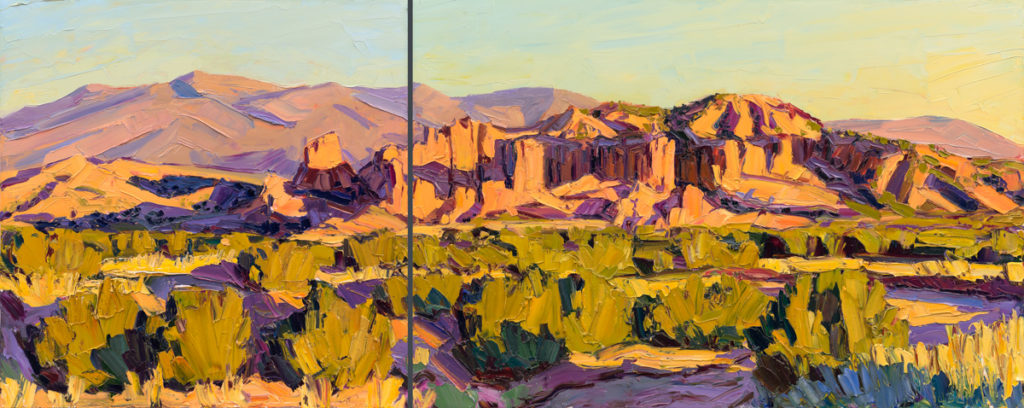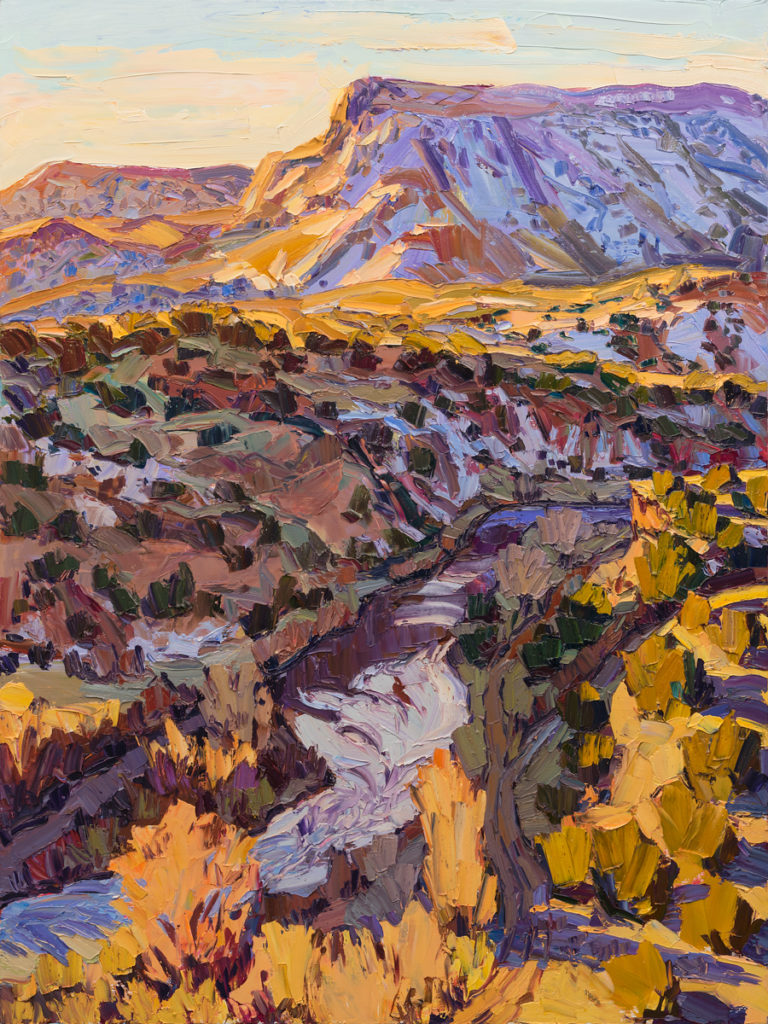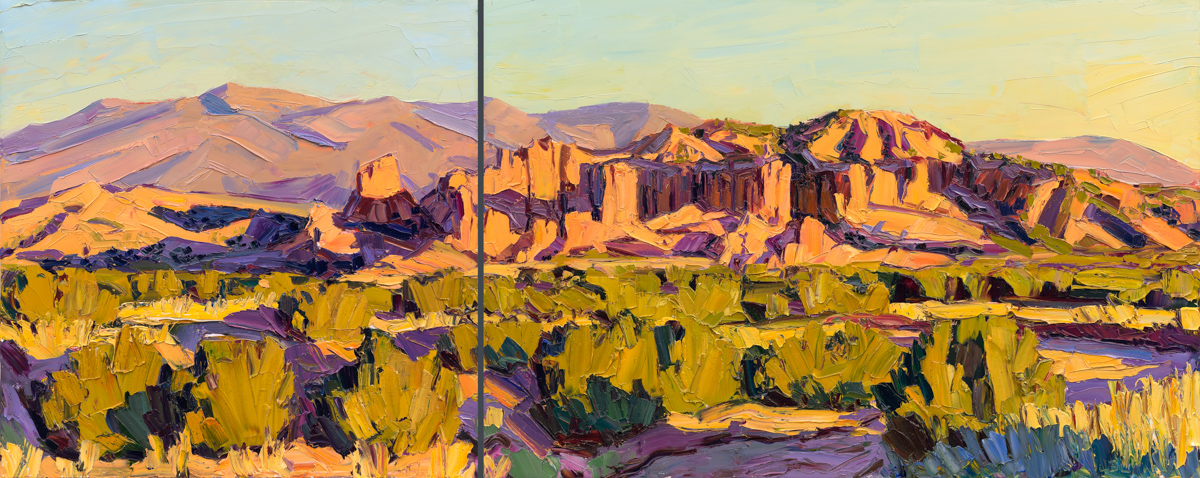Jivan Lee’s large plein air paintings are on view at Altamira Fine Art, in Scottsdale, AZ, through February 18. Did we mention they are large?
Lee reports that more than 15 of his pieces are on display in the exhibition, which is titled “Our Land.” His paintings regularly exceed five feet in width. The size of his pieces may seem nearly impossible to tackle for many plein air painters. How can you fill a 4’-x-5’ canvas before the light changes? Lee says what helps him is time spent on-site before he starts the big piece.

“I will look at a site three or four times before I paint it,” he says. “One place I looked at for literally five years until I got the hunch that I could paint it. I would sit in various weather and take notes. I rafted past it. I studied the overall ambience of the place.” And most important, he did preliminary paintings on location before moving up to the largest canvas. “I did 30”-x-40” versions, 24”-x-30” versions before moving up to the larger piece,” he says. “When the big ones work, it is usually because I really know the place. There’s no need for much intellectual dialogue.”
In fact, Lee says he sometimes finishes one of his very large canvases in less time than he does some small studies. The reason is that with the study, he is gathering information and solving problems — learning the scene. In the big piece, ideally, he is simply reacting to it. The artist gets out a large spatula and starts moving the paint around. “I don’t like a palette knife,” says Lee. “It can move paint across the surface quickly, but the metal blade is almost surgical in its precision. And I found the scraping was distracting — even the sound of the scraping distracted me. A big silicone spatula with a long handle has all the benefits of a knife and can hold a lot of paint, but it sculpts the paint more organically.”

Lee is thankful that he is still young and strong, so moving the big pieces around, with their aluminum stretchers, isn’t an issue. He is perfectly willing to break down a setup and sit through a passing storm, then haul everything out again. In fact, in talking with Lee, it appears that the biggest obstacle he faced with these large pieces was a mental obstacle — the fear of wasting materials. Here again, the stakes were high. In part because he likes the look of impasto, Lee can go through a lot of oil paint in one piece. Lee estimates that some paintings have as much as 1.75 liters of paint on them. The aluminum stretcher bars cost $150, and the canvas, at least $50 more. A particular painting may have 15 tubes of white on it.
“It isn’t so much that I was going to waste paint—it is the fear of failure,” Lee says. “When I freed myself from that, I could paint more freely, go with my first hunch. That is absolutely essential. If you don’t, there’s not time. You won’t get the painting done.”

Lee responds by mixing primarily on the surface and letting go. “It’s kind of like a dance partner,” he says. “I have to flow with it. If I hold on to one moment, it will kill the painting. I have to allow dynamic movement to allow me to compose light and dark patterns. It has to be more about the painting than the scene.”
Regarding the current show, Lee expresses considerable enthusiasm, boosted by his travels. “My wife and I took a big road trip this fall all across the United States, and I have some fresh stuff from Maine (ocean!) as well as work from my home region,” he says. “Big pieces, lots of weather and light.”
For more information, click here.




